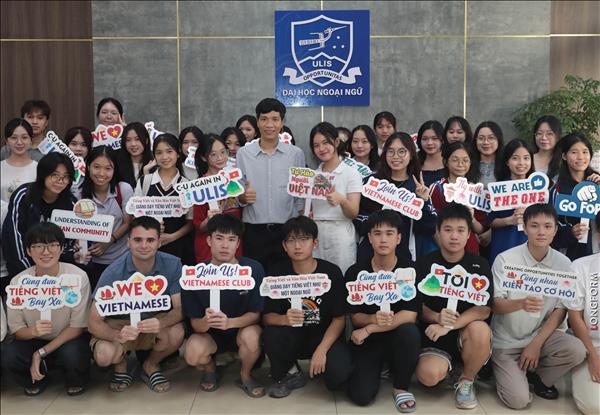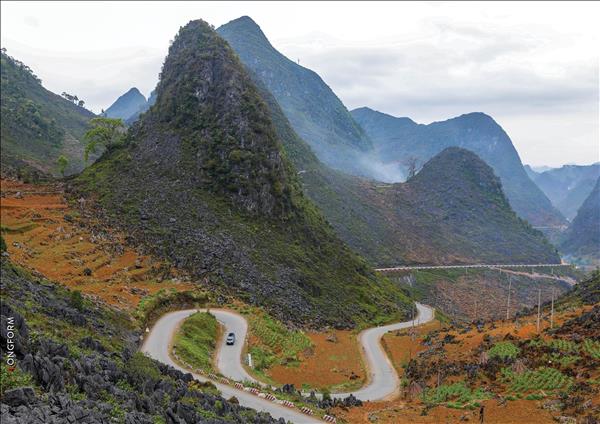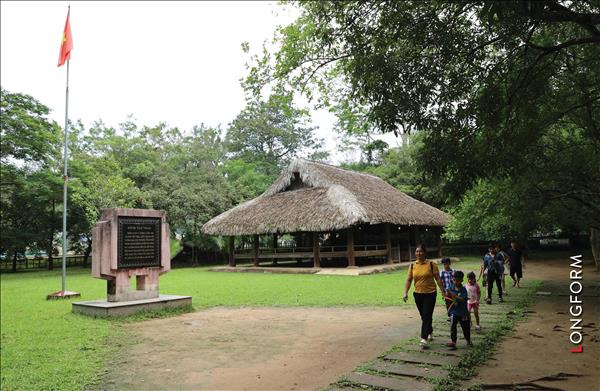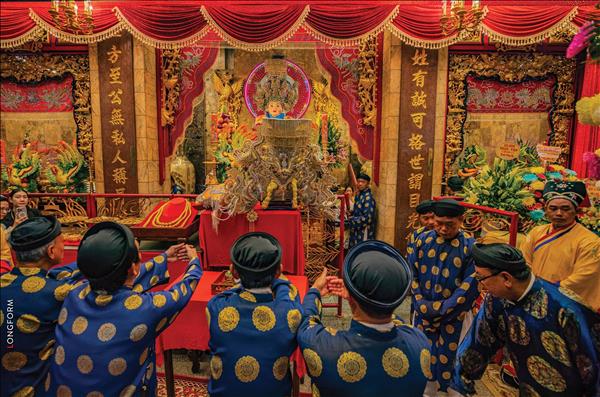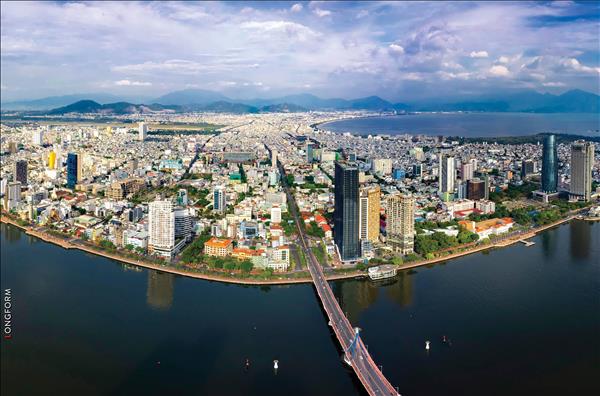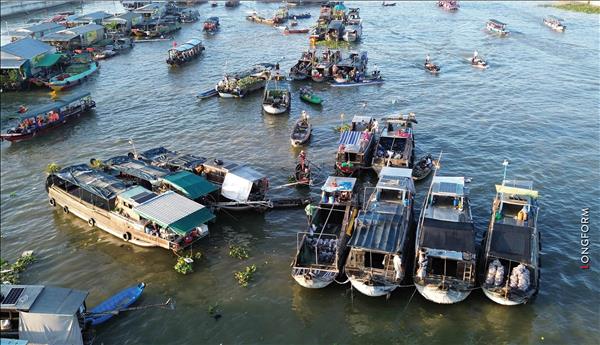The Pagoda – the Heart of the Khmer Community
We followed a Khmer friend, Thach Ri Con, to his place in Tra Vinh, on the occasion of the Khmer traditional New Year’s festival – Chol Chnam Thmay. The place we went to first was not his home but a pagoda called Xoai Xiem Moi. Thach Ri Con bowed down in front of the head monk, Thach Nhut, his former teacher, showing his deep respect and gratitude to the old monk.
Thach Ri Con said pagodas are the most sacred and important places for Khmer people who have been a part of them throughout their lives.
According to the head monk Thach Nhut, for a long time, Khmer men must spend a period of monkhood in pagodas to foster their virtues and knowledge. If not, they are not recognised as adults. Khmer people have their own language and script. During their time in pagodas, young men are taught to write and speak their own Khmer-Pali language. The trainees also learn Buddhism and are taught to distinguish the good from the bad. This has contributed to the preservation and development of the Khmer language, the best way to preserve their traditional culture.
After their time in pagodas, they can opt to become Buddhist monks or to return to their family life, using what they have learned to help themselves as well as their community. This is what Thach Ri Con did and is now working as a Khmer-language translator for a multilingual newspaper in Ho Chi Minh City.
Thach Ri Con revealed that many of his relatives in Tra Vinh became carpenters, building boats or doing wood sculpture at Khmer pagodas. This serves as a way to preserve this traditional craft of the Khmer people in addition to such fine-art handicrafts as mat weaving, loom-weaving, pottery, mask making and musical instrument and drum making. Their products serve their livelihood, on the one hand, and pagoda rites during different festivals, on the other.
After they die their bodies are cremated and the ashes are kept in towers in the rear of the pagodas. The Khmer wish to stay in pagodas even after they die.
Lively Festivals of the Khmer
We have, time and again, gone with Thach Ri Con to the deep-lying district of Tra Cu, Tra Vinh province, where the largest number of Khmer live (representing 62% of the population), to learn about the life and culture of the Khmer. Each time, we have all understood the glamour and distinctiveness of the Khmer people’s traditional culture, which they have preserved from generation to generation.
When each harvest comes, Thach Ri Con returns to his native land, joining his friends and family in giving thanks in pagodas. He told us that there exists among the Khmer population many rites and practices related to harvests, demonstrating the life of an agricultural culture. For instance, on the occasion of Oc Om Box festival (organised annually on the 15th of the tenth moon, the last day of summer), after gathering their crops, people pound cereal together with rice to worship the moon, expressing their thanks. On Chol Chnam Thmay New Year’s festival, they offer to Buddha and the monks food they have made, praying for good health to their families as well as favourable weather for their next crops.
When Thach Ri Con took us in a tour of Xoai Xiem pagoda, we saw a hectic atmosphere when Buddhist monks busily prepared for Chol Chnam Thmay festival. Khau Thi Hoa, 54 years old, in Ward 1, Tra Vinh city, said: “Several days before Chol Chnam Thmay, local Buddhist nuns come to assist monks in cleaning up pagodas. I ask my elder sister and nieces to go with me. All people enthusiastically and voluntarily do what they can as this has become a tradition now”.
We followed a Khmer friend, Thach Ri Con, to his place in Tra Vinh, on the occasion of the Khmer traditional New Year’s festival – Chol Chnam Thmay. The place we went to first was not his home but a pagoda called Xoai Xiem Moi. Thach Ri Con bowed down in front of the head monk, Thach Nhut, his former teacher, showing his deep respect and gratitude to the old monk.
Thach Ri Con said pagodas are the most sacred and important places for Khmer people who have been a part of them throughout their lives.
|
As most Khmer follow Buddhism, pagodas have become extremely sacred and important in their lives. Photo: Nguyen Luan/VNP Some pagodas were built several centuries ago, which are recognised as national cultural and architectural relics such as Ang, Met, Hang and Doi pagodas. Photo: Nguyen Luan/VNP 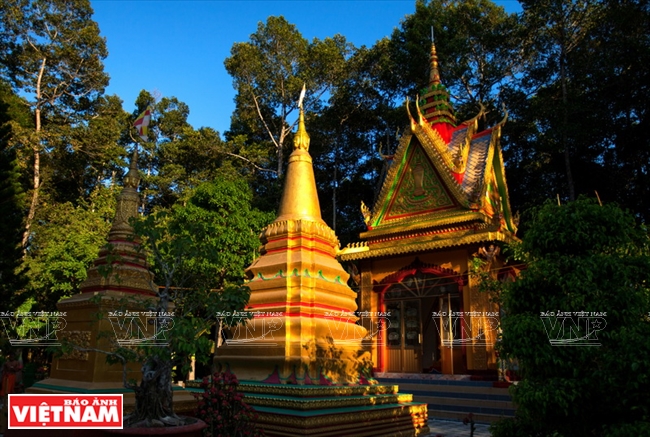 After death, the bodies of the Khmer are cremated and their ashes are stored in pagoda. Photo: Nguyen Luan/VNP A main sanctum of a pagoda. Photo: Nguyen Luan/VNP A ceremony in a pagoda in Xoai Xiem Moi in Tra Cu district, Tra Vinh. Photo: Nguyen Luan/VNP 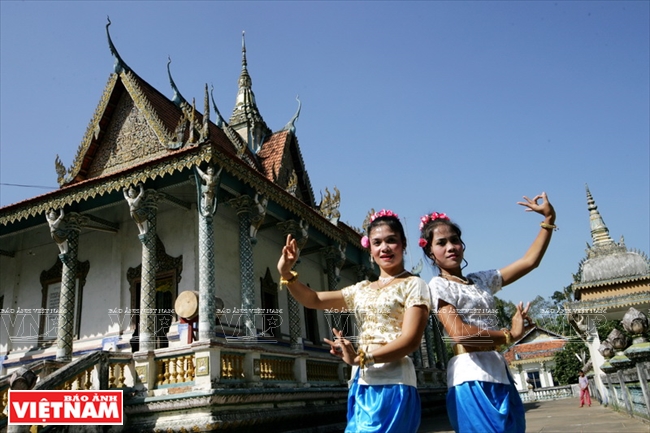 Khmer youngsters in traditional costumes. Photo: Minh Quoc/VNP |
| As most Khmer follow Buddhism, pagodas have become extremely sacred and important in their lives. There exist now in Cochinchina some 600 Khmer pagodas, big or small, with more than 10,000 Buddhist monks. Some pagodas were built several centuries ago, which are recognised as national cultural and architectural relics such as Ang, Met, Hang and Doi pagodas. |
After their time in pagodas, they can opt to become Buddhist monks or to return to their family life, using what they have learned to help themselves as well as their community. This is what Thach Ri Con did and is now working as a Khmer-language translator for a multilingual newspaper in Ho Chi Minh City.
Thach Ri Con revealed that many of his relatives in Tra Vinh became carpenters, building boats or doing wood sculpture at Khmer pagodas. This serves as a way to preserve this traditional craft of the Khmer people in addition to such fine-art handicrafts as mat weaving, loom-weaving, pottery, mask making and musical instrument and drum making. Their products serve their livelihood, on the one hand, and pagoda rites during different festivals, on the other.
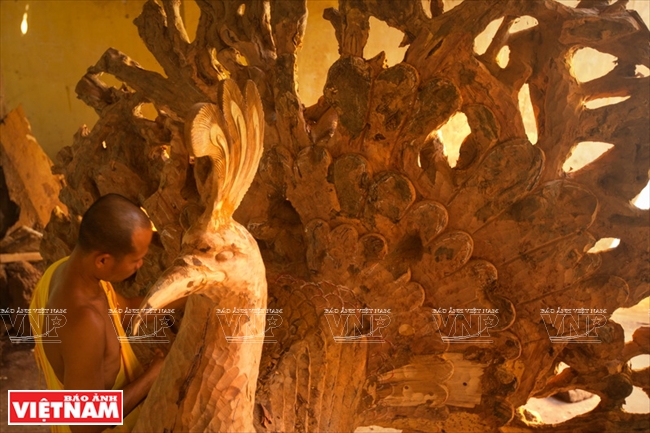 The pagoda is also a traditional carving training class of the Khmer. Photo: Nguyen Luan/VNP 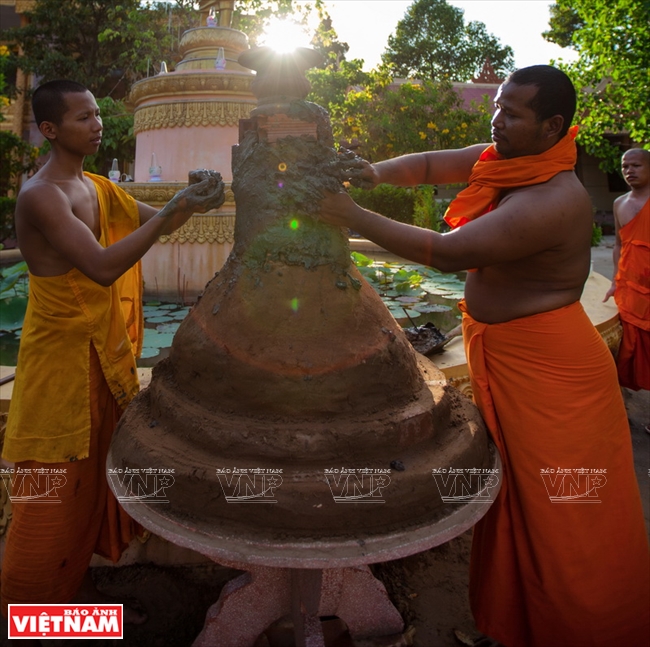 Monks of Kompong pagoda in Tra Vinh province build a structure to prepare for a New Year’s Festival. Photo: Nguyen Luan/VNP 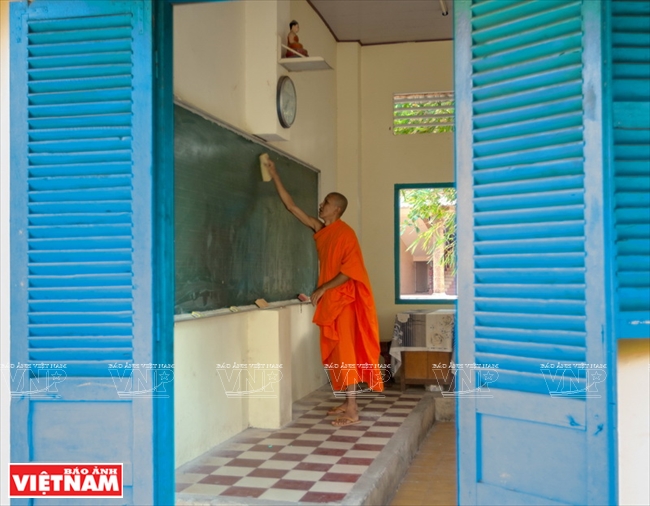 A Khmer language class inside a pagoda. Photo: Nguyen Luan/VNP  A woman offers incense at Chol Chnam Thmay festival. Photo: Nguyen Luan/VNP 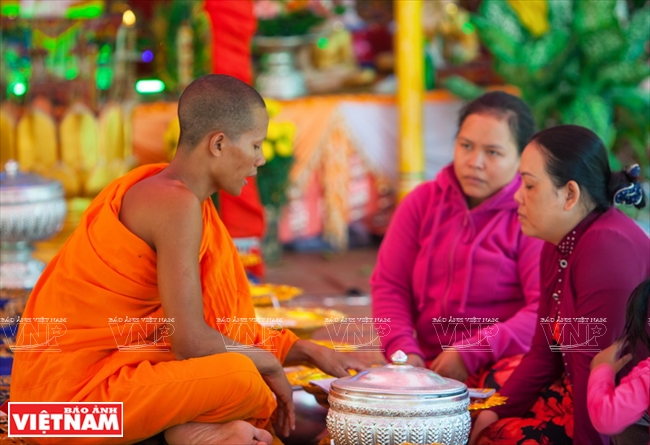 Monk gives lessons to Khmer women. Photo: Nguyen Luan/VNP Monk gives lessons to Khmer women. Photo: Nguyen Luan/VNP |
After they die their bodies are cremated and the ashes are kept in towers in the rear of the pagodas. The Khmer wish to stay in pagodas even after they die.
Lively Festivals of the Khmer
We have, time and again, gone with Thach Ri Con to the deep-lying district of Tra Cu, Tra Vinh province, where the largest number of Khmer live (representing 62% of the population), to learn about the life and culture of the Khmer. Each time, we have all understood the glamour and distinctiveness of the Khmer people’s traditional culture, which they have preserved from generation to generation.
When each harvest comes, Thach Ri Con returns to his native land, joining his friends and family in giving thanks in pagodas. He told us that there exists among the Khmer population many rites and practices related to harvests, demonstrating the life of an agricultural culture. For instance, on the occasion of Oc Om Box festival (organised annually on the 15th of the tenth moon, the last day of summer), after gathering their crops, people pound cereal together with rice to worship the moon, expressing their thanks. On Chol Chnam Thmay New Year’s festival, they offer to Buddha and the monks food they have made, praying for good health to their families as well as favourable weather for their next crops.
When Thach Ri Con took us in a tour of Xoai Xiem pagoda, we saw a hectic atmosphere when Buddhist monks busily prepared for Chol Chnam Thmay festival. Khau Thi Hoa, 54 years old, in Ward 1, Tra Vinh city, said: “Several days before Chol Chnam Thmay, local Buddhist nuns come to assist monks in cleaning up pagodas. I ask my elder sister and nieces to go with me. All people enthusiastically and voluntarily do what they can as this has become a tradition now”.
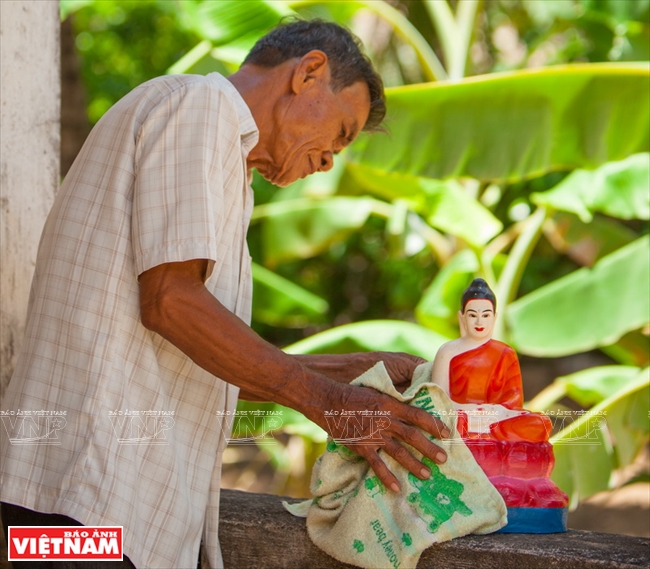 A local man cleans a Buddhist statue in preparation for CholChnamThmay festival. Monks of Kompong pagoda in Tra Vinh province build a structure to prepare for a New Year’s Festival. Photo: Nguyen Luan/VNP 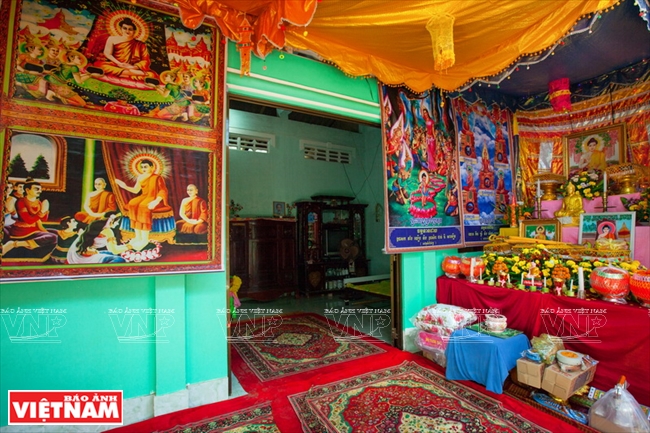 Decorating the altar in preparation for Chol Chnam Thmay festival. Photo: Nguyen Luan/VNP 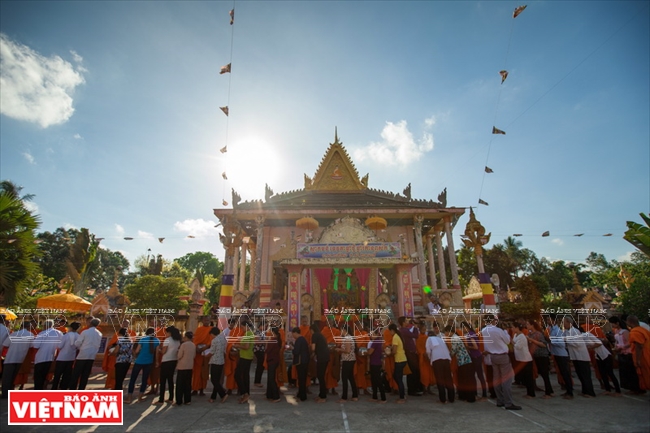 A ceremony during Chol Chnam Thmay festival. Photo: Nguyen Luan/VNP The Khmer use perfumed water to clean a Buddhist statue….Photo: Nguyen Luan/VNP ... and the remaining water will be used to clean the feet of elderly people. Photo: Nguyen Luan Monks in Buddhist robes lining up at Xoai Xiem pagoda during Chol Chnam Thmay festival. Photo: Nguyen Luan/VNP |
| Over 1.3 million Khmer live in Vietnam, largely in the Mekong river delta region, ranking second in local population, after the Kinh. They reside in the provinces of Tra Vinh, Soc Trang, Kien Giang, An Giang, Bac Lieu, Vinh Long and Can Tho.… |
Thach Sam Khan, 37 years old, who made offerings at Xoai Xiem Moi pagoda, said: “I sincerely pray to Buddha to bring good health and security to my grandparents, parents and other family members”.
In a year, there are more than ten festivals for the Khmer community in Cochinchina, including three principal ones: Donta festival, Chol Chnam Thmay New Year’s festival and Ok Om Bok (moon worshipping rite) festival.
According to their customs, on New Year’s Eve, the Khmer people prepare fruit, incense sticks and kerosene lamps for the ritual to see off the old Tevoda (fairy) to heaven and welcome the new one to earth. The Khmer people believe that each year a fairy will descend to earth, taking care of their lives. Bonze Superior Tran Dan, who resides at K’tung pagoda, told us that pagodas have the task to inform people of the time to welcome the New Year so that they can prepare, chant prayers and march in procession to welcome the New Year.
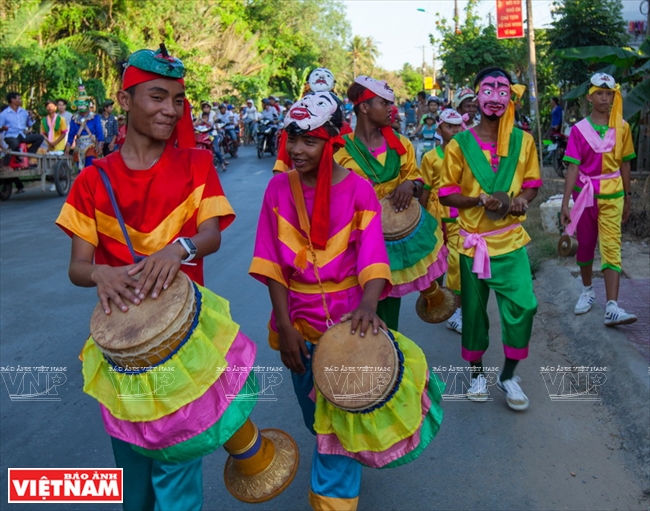 Khmer youngsters participate in a traditional parade during Chol Chnam Thmay festival. Photo: Nguyen Luan/VNP 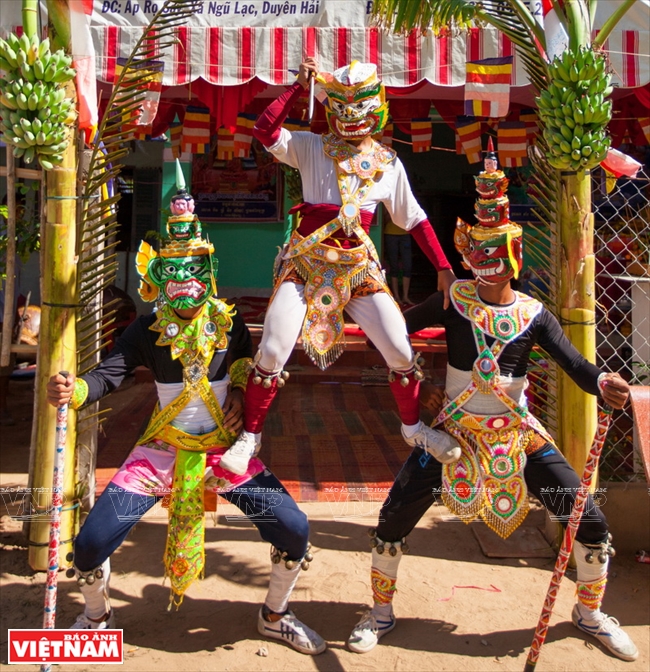 Khmer youngsters in traditional costumes. Photo: Nguyen Luan/VNP 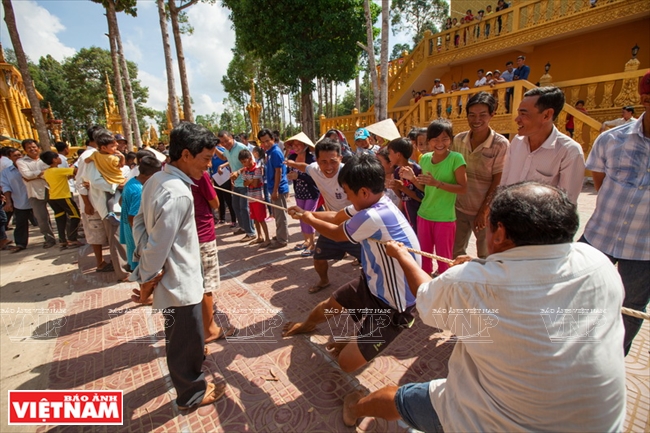 A number of games were held during Chol Chnam Thmay festival. Photo: Nguyen Luan/VNP Buffalos racing in Bay Nui, An Giang province. Kim Phuong/VNP 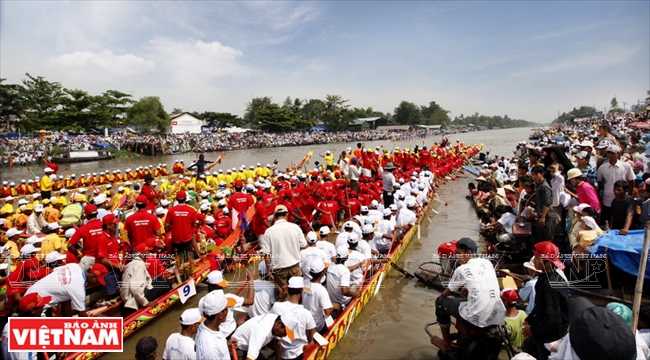 Boats racing during Ok Om Bok festival in Soc Trang province. Photo: Minh Quoc/VNP |
On New Year’s night, such traditional Khmer arts as Robam dancing, Aday singing and folk singing are performed at Khmer pagodas. Du Ke, a traditional opera of the Khmer, attracts big audiences.
The cultural and spiritual life of the Khmer in Tra Vinh in particular and Cochinchina in general is extremely vivid, bearing distinctive cultural imprints and is closely associated with their beliefs and religious life. The Khmer live a simple, quiet and happy life, joining in the rich common current of the great family of Vietnamese nationalities.
Story: Sơn Nghĩa - Photos: Nguyen Luan & VNP Files

